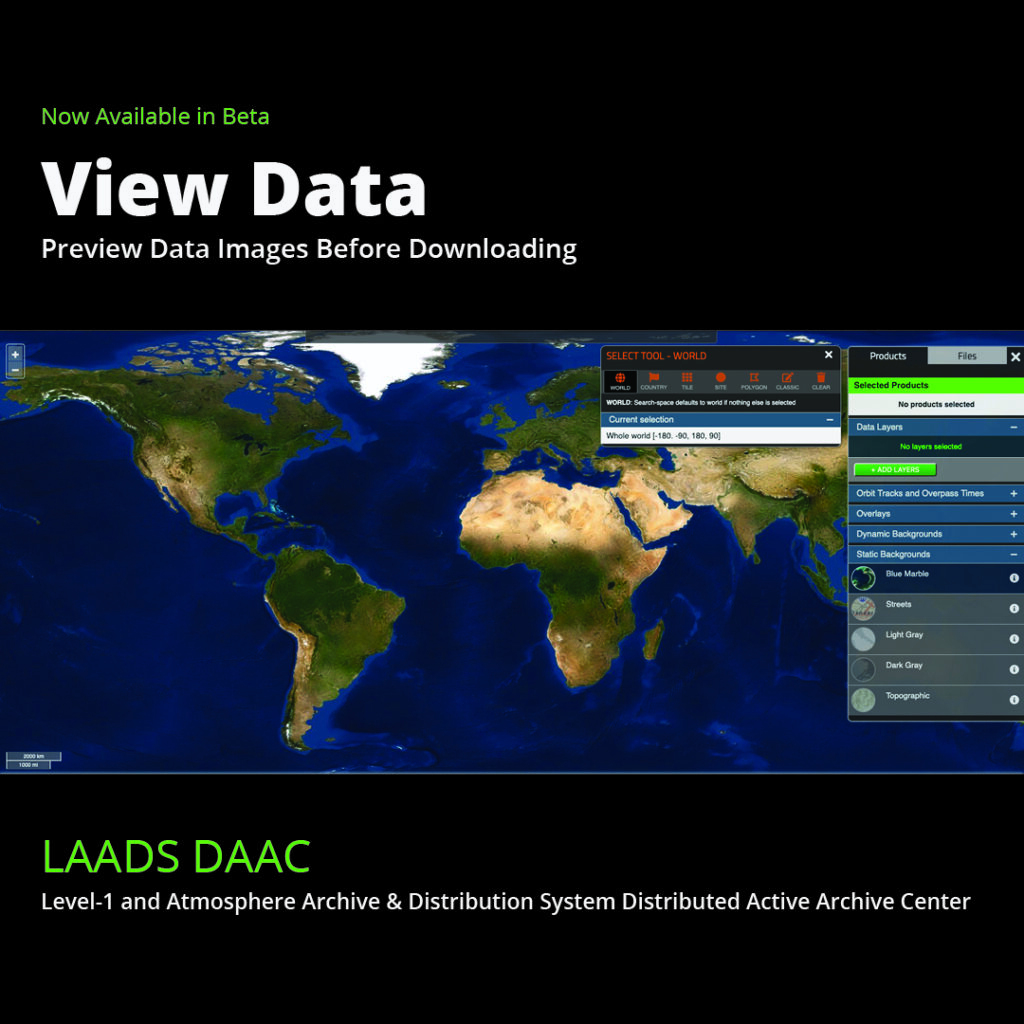Two printed wire assemblies (PWA) on the Terra satellite stopped working, resulting in lost data from the Multi-angle Imaging SpectroRadiometer (MISR) and the Moderate Resolution Imaging Spectroradiometer (MODIS) on June 28th and June 29th, 2021. Radiation from the Sun and deep space likely caused an overcurrent issue that stopped the printed wire assemblies from working.
“We have to manually send the update that says, don’t record to that PWA anymore, but until we do that it keeps trying to save data to the bad PWAs,” says Jason Hendrickson, Terra Flight Systems Manager. Terra’s flight operations Team quickly worked to initiate commands to mark the printed wire assemblies as bad so that they were no longer used. During the time it took to initiate these commands, both MISR and MODIS lost data. However, repercussions from these non-functioning printed wire assemblies have longer lasting impacts – reduced storage capacity of MODIS and MISR data on Terra’s solid-state recorder.
Prior to these printed wire assemblies malfunctioning, fifteen other printed wire assembly stoppages had occurred, each time reducing Terra’s solid-state recorder data storage capacity. However, in 2001, after the first printed wire assembly stopped working, rebooting the solid-state recorder corrected the issue, restoring function. Now with only 43 of 59 printed wire assemblies functioning, data storage capacity has decreased to a critical point for MODIS and MISR.
In a working group meeting held in 2019, this scenario was discussed. All instrument teams made choices about what to do if any more printed wire assemblies stopped working. The options discussed included: downlinking data more frequently, reducing the number of science observations by MISR and MODIS, or rebooting the solid-state recorder in hopes that the printed wire assemblies begin to work again. Weighing the risks and benefits of these courses of action is not taken lightly.
“It takes less time to fill up the storage once we mark the printed wire assembly bad, but the same amount of data is being produced by the instruments as always,” says Dimitrios Mantziaras, Terra Mission Director. To keep all the data that is being produced by the instruments, the data would need to be downlinked more frequently. While this may sound easy, data downlink is limited by the number of passes Terra makes past Tracking and Data Relay Satellites. Without more of these satellites in Terra’s line of sight, data cannot be downlinked more regularly.
Another option is to reduce MODIS and MISR science observations.
“The impact on MODIS data is considered significant,” says Michael King, MODIS Instrument Lead. The MODIS science team is faced with choosing to record data from fewer bands or to accept gaps in their data.
MODIS typically operates with 50% of the orbit recording of daytime bands (all 36 bands), whereas the other 50% of the orbit records only 17 thermal bands (night mode). The Flight Operations Team can reprogram the percentage split, extending the night mode data collection and decreasing the daytime data collection. This reduces the total amount of data that is collected between data dumps. However, daytime bands are essential for many MODIS data products including: ocean color and ocean optical property products, many atmospheric products, and many land products. Additionally, the daytime bands are important in an early part of data processing that identifies clear sky from clouds. “The loss of the ability to record these bands and derive the corresponding products will affect time series of Earth observations over the course of the Terra mission, leaving gaps in data in the polar regions,” says King.
Similarly, MISR is faced with reducing about 6 minutes of data per orbit. To mitigate data loss, the MISR science team strategized trimming ascending node data collected near the poles (most, but not all, dayside data are acquired on the descending node when Terra is flying from north to south). “Near the summer and winter solstices the scientific impact is minor, but during fall and spring the required trimming includes either loss of descending node data at high latitudes in both hemispheres or choosing between Arctic or Antarctic coverage,” says David Diner, MISR Principal Investigator. To minimize impacts to the science community that relies on MISR data, the Arctic region — where MISR’s data significantly contributes to measuring sea ice minima, albedo decrease, and support of field campaigns — will be prioritized. “Unfortunately, this will curtail the long-term record of sea ice albedo, anthropogenic aerosol influences, and ice sheet breakup in southern polar regions, which have been the subject of published investigations by the science community,” says Diner.
While these options for data reduction come at costs, the teams are considering rebooting the solid-state recorder, which was done once in 2001. “There is no identifiable risk to doing the reset,” says Kurt Thome, Terra Project Scientist. The successful restart of the solid-state recorder in 2001 brought the first inoperative printed wire assembly back online. If a restart works, then MISR and/or MODIS could continue to collect data as was done prior to the recent malfunctions, potentially even returning Terra’s data storage capacity to the amount it had at launch.
As Terra continues to drift toward it’s expected constellation exit in fall of 2022, the Terra science and Flight Operations Teams continue to preserve Terra’s more than two-decades of data with as much continuity as possible, adding to Terra’s historic long-term data record of Earth observations.


